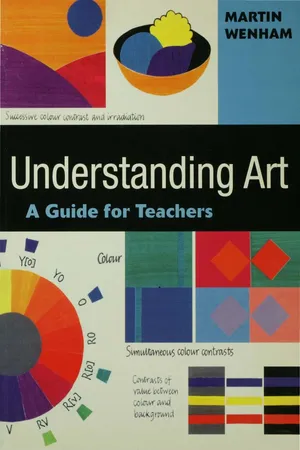
- 184 pages
- English
- ePUB (mobile friendly)
- Available on iOS & Android
About this book
The National Curriculum places strong emphasis on experimenting with and applying the visual elements. This book systematically explores the basic knowledge needed to do this effectively. The author deals with the visual elements of art, their properties, how they are related, and especially with the ways in which children?s knowledge of each can be developed through simple but creative activities. Each element is placed in context, with extensive cross-referencing. The author shows how these elements can be observed in the children?s environment and provides examples of how they have been used in works of art and craft.
This accessible book does not assume any specialist knowledge or experience. It is essential for teachers at primary and secondary levels, art co-ordinators and for undergraduate and postgraduate level students of art education.
Martin Wenham is an artist, calligrapher and stone carver who has exhibited at the Craft?s Council. He has taught at the University of Leicester and has over twenty years? experience of teaching in primary and secondary schools.
Frequently asked questions
- Essential is ideal for learners and professionals who enjoy exploring a wide range of subjects. Access the Essential Library with 800,000+ trusted titles and best-sellers across business, personal growth, and the humanities. Includes unlimited reading time and Standard Read Aloud voice.
- Complete: Perfect for advanced learners and researchers needing full, unrestricted access. Unlock 1.4M+ books across hundreds of subjects, including academic and specialized titles. The Complete Plan also includes advanced features like Premium Read Aloud and Research Assistant.
Please note we cannot support devices running on iOS 13 and Android 7 or earlier. Learn more about using the app.
Information
Table of contents
- Cover Page
- Dedication
- Title
- Copyright
- Contents
- List of figures
- Preface
- Acknowledgements
- 1 Art as Exploration
- 2 Point
- 3 Line
- 4 Tone
- 5 Mixing and Controlling Colour
- 6 Perceiving and Observing Colour
- 7 Responding to Colour
- 8 Shape
- 9 Space
- 10 Form
- 11 Texture
- 12 Pattern
- Appendices
- References
- Index